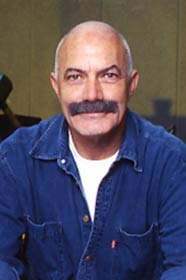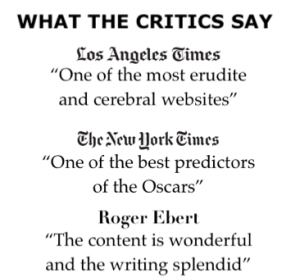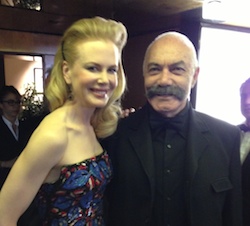Hollywood Elite: Oscar Directors, 1927-2027
Book Proposal
By Emanuel Levy, Ph.D.
Professor of Film and Sociology
Author of 9 film books
August 10, 2025
Proposal registered at the Library of Congress
Hollywood Elite: Oscar Directors, 1927-present
Tribute to Robert Merton’s Program in the Sociology of Science at Columbia University (my Ph.D. 1978) and Harriet Zuckerman’s pioneering book, Scientific Elite.
Alternative title:
Screen Elite: Hollywood Directors
Age, Achievement, Accolade, Attrition
(Note that all the sub-categories begin with the letter A)
Over the past 97 years, 259 filmmakers have been nominated for the Best Director Oscar, the most coveted, prestigious and influential prize in the global film world.
(See Levy’s All About Oscar: The History and Politics of the Academy Awards; now in its 11 edition)
In my study, the Hollywood elite is a small, highly acclaimed group of filmmakers, composed of 78 winners and 181 nominees.
Many of the winners have won multiple Oscar Awards and nominations: William Wyler leads with 12 nominations, followed by Martin Scorsese, 10, and Steve Spielberg, 9.
And several of the contenders have received multiple nominations, withoit ever winning. The “greatest loser” is no other than Alfred Hitchcock, with five nominations and nom Oscars; though Rebecca won the 1940 Best Picture Award.
Except for the first year, in which the Best Director award was given to two individuals (one for comedy, the other for drama), in each of the other years, the category of Best Director has consisted of five nominees.
In theory, the directors are nominated regardless of age, genre, nationality, and the language in which their films were made. In practice, however, this category is dominated by U.S. born filmmakers, who are nominated for making English-speaking films.
Even foreign-born directors, such as Italian Bernardo Bertolucci, had been nominated (Last Tango in Paris, 1973) and/or have won (The Last Emperor, in 1987) for English-speaking films that are largely backed by American financing.
Below please find a list of all Oscar nominated directors, from the beginning to the present, in alphabetical order.
Studying Screen Careers:
The importance of studying systematically directorial careers is highlighted by the following case studies:
Quentin Tarantino, the young, talented director, has expressed a deep concern shared by many filmmakers about maintaining artistic control in an industry that’s necessarily collaborative and notoriously commercial and mass-oriented.
Enjoying a screen career of over 50 years, Woody Allen is the only contemporary director who was bae to make a film each and every year–until he was cancelled in 20023. This fact alone makes him the most productive filmmaker in American cinema.
However, the more interesting question is the degree of correlation between Allen’s prodigious productivity and the artistic qualities of his films? Critics cannot dictate the sheer productivity of directors (how fast to work, how many films to make). However, it is our task and responsibility to evaluate and reassess the merits of each individual feature, and the place that it occupies in the over context of the director’s entire career.
In contrast to Allen, in three decades, from 1973 to 2005, Texas-based Terrence Malick had made only three films: Badlands (1973), Days of Heaven (1978) and The Thin Red Line (1998). Nonetheless, each of these original films was critically acclaimed and The Thin Red Line was nominated for the Best Picture Oscar. Over the past decade, however, Malick has increased his pace and had made six films; most mediocre. As a result, his output now consists of a dozen films or so.
In 1978, with the release of the epic Vietnam saga The Deer Hunter, Michael Cimino was deemed the most brilliant filmmaker working in Hollywood. Sweeping most of the Oscars, The Deer Hunter announced the arrival of a major talent. However, two years later, Heaven’s Gate literally terminated Cimino’s career. He had not been able to recover from the 1980 debacle (documented in Steven Bach’s “Final Cut”). As a result, he had made only seven films in 30 years; he died 1n 2016, at the age of 77.
Examining the careers of the late Robert Altman and Sidney Lumet, two veteran and respected directors, who were contemporaries and of the same age, one can’t help but notice the major ups-and-downs in the career of Altman, a late bloomer, who made his best work in the 1970s (M.A.S.H., Nashville, The Player), while he was already in his 50s.
As for Lumet, after a brilliant debut and some good movies in the 1960s, he reached his peak in the mid-1970s, making three masterpieces in a row: Serpico in 1973, Dog Day Afternoon in 1975, and Network in 1976.
Examining the careers of Allen, Altman, Malick, Cimino, and Tarantino show the theoretical and empirical challenges in evaluating directorial careers and the crucial issue of productivity versus creativity.
Summary:
Woody Allen’s output is large (50 films and counting) and the speed of work astounding (one film every year) but the quality is uneven and variable.
Terrence Malick’s oeuvre is small but impressive (ten films in four decades, half of which widely acclaimed).
Michael Cimino has had no sustained career– his last film was made in 1996.
Tarantino, the most influential direct0r his generation (9 films in 33 years) takes his time (last film, the 2019 Oscar winning Once Upon a Time in Hollywood… aiming to maintain complete artistic control over each feature.
In order to explain the variability of film careers it’s important to place them in a broader socio-historical and filmic-cultural perspectives, using theoretical concepts (such as creativity and originality) and empirical measures (such as film output, Career span in years, commercia success in box-office terms).
Central concepts of the Book:
Institutional Apparatus:
Even the most conspicuously artistic film and the most accomplished directorial careers need to be placed in broader non-aesthetic contexts. While scholars may or may not agree over what constitutes a great film or an accomplished career, they all realize that aesthetic film history is interrelated with social, economic, and technological histories. My study will examine the impact of different institutional structures (the studio system versus the New Hollywood, mainstream versus independent cinema) on creativity, productivity, and the shape of careers.
Film Career:
The notion of artistic career remains one of the most misunderstood and least used in film studies. Some historians treat careers in a vague, mysterious way.
In his effort to explain director Carol Reed’s three great films (Odd Man Out, The Fallen Idol, The Third Man) made within three years (1947-1949), British the critic David Thomson perceives Reed’s creativity as a “puzzle of collaborators, timing, inspiration, and chance.”
But this broad statement doesn’t offer a sufficient explanation of Reed’s brief creativity–and then gradual decline.
Creativity:
Only a few terms denote and connote so many different meanings as the concept of creativity. According to one definition: “Creativity achieves products that have originality (novelty, uniqueness) and quality (merit, significance).” Whereas it’s easier to assess the greatness of creators such as Beethoven, Picasso, and Einstein, some artists (Van Gogh) fail to win recognition during their lifetime. Moreover, judgments of quality could be subjective and unreliable; like beauty, aesthetic quality may reside in the beholder’s eye. As for originality, it’s often minimal and not necessarily desirable in film due to the medium’s industrial nature and mass orientation.
Productivity:
Sheer productivity is a more objective and quantifiable variable than creativity or originality, as it can be measured by the output (number of films) and career longevity (span of years between first and last film, age at last film).
Book’s Major Goals”
The book’s major goal is to assess the diverse variety of career patterns among Hollywood directors
Directors who moved up the rank (Hawks, Ford, Walsh, Wyler, Stevens, Zinnemann)
Directors who came from the Broadway theater (George Cukor, Vincente Minnelli)
Directors who began as writers (Preston Sturges, John Huston, Billy Wilder, Joseph L. Mankiewicz)
Directors who began working in television prior to making films (Lumet, Frankenheimer).
Artistic Evolution:
The social and artistic factors that account for directors’ development. Some directors tend to repeat themselves by working within the same genre or using the same stylistic devices, while others reinvent themselves with each film.
Age and Creativity:
Do most directors achieve their creativity early on in their careers? Phrased differently, at what age do directors make their best films? How crucial is the first decade in predicting the future shape of directorial careers?
Creativity and Productivity:
What is the relationship between creativity and productivity? What is length of directorial careers and what are the crucial determinants of longevity. Bunuel, Kurosawa, Hitchcock, and John Huston, to name a few, have made their best work at an older age, during the last decade of their careers. The study will examine career durability (in terms of years), productivity (number of films), and creativity (originality and quality of work)
Reputation: Critical Recognition:
At what age directors tend to get critical recognition for their work. Recognition may take various forms: Favorable reviews (as measured by IMDB, Rotten Tomatoes citations from critics groups, such as the New York or Los Angeles Film Critics Associations; nominations and awards from peers such as the Directors Guild of America (DGA) nominations and awards, Oscar nominations and awards.
Career Longevity:
Hollywood is known as a young artist’s place. The study will ask the question of at what age do directors make their last film? Is retirement a matter of choice or forced reality of the marketplace?
Gender, Creativity and Productivity:
The study will examine the impact of gender on directorial careers in terms of productivity and creativity (see Data).
Methods and Data
The entire group of filmmakers is divided into subgroups, or generations, determined by the director’s birth date and film debut. Covering the sound era (1927-present), the lengthy historical frame allows for systematic comparisons among the career patterns of four generations of directors:
The Studio Directors:
These are contract directors born between 1890 and 1919 and working within the studio system during Hollywood’s Golden Age.
The Second Generation: Directors born between 1920-1939, who began directing in the late 1940s and 1950s. Many of these directors started their careers in television (Altman, Penn, Lumet).
The Film School Generation: Filmmakers born between 1940 and 1959, who are graduates of film schools and began directing in the 1960s and 1970s: Coppola, Scorsese, Lucas, Spielberg.
The Current Generation: Filmmakers born between 1960 and 1979, who began directing in the 1990s. This group will be divided into two cohorts: Mainstream Hollywood and independent cinema.
Women Directors:
Since there are no more than 50 women in American film history who have enjoyed sustained careers, the study will place all the women into one group, even though they belong to different generations. Among the women to be included are: Dorothy Arzner, Ida Lupino, Barbra Streisand, Penny Marshall, as well as foreign directors (Jane Campion, Gillian Armstrong), who began their careers in their native countries but later made Hollywood films.
Hollywood Elite: Oscar Directors is meant as a definitive survey of the major directors of the American cinema during the sound era, from 1927 to the present.
The study will contest myths such as the notions that careers are short and unpredictable, or that old directors ted to repeat themselves or cease to develop after a certain age.
Age, Achievement, Accolade, Attrition of Hollywood’s Best Filmmakers
A study of the career patterns of all the directors (winners and contenders) nominated for the Best Director Oscar, 1927-Present.
The book is based on extensive study of the careers of all the Oscar directing nominees (259 filmmakers), the winners (78) as well as the contenders (181) over the past century, 1927-2026.
The targeted publication date is 2027, which will mark the first century of the Academy Awards, first given in 1929 (for achievements in 1927-1928), as well as the centenary of the sound era (the release of The Jazz Singer, in 1927.
Table of Contents (Detailed)
Introduction
Studying Elites: Scientific, Military, Political, Artistic–and Cinematic
Chapter 1: Social Origins
Background, Occupational Inheritance; Class; Race, Gender
Chapter 2: Formal Education and Training
Chapter 3: Age at First Film
Chapter 4: Age at First Oscar Nomination
Chapter 5: Age at Winning the First Oscar
Chapter 6: Multiple Nominations; Nominations Span
(years between first and last nomination)
Chapter 7: Winners Vs. Nominees
Chapter 8: American Vs. Foreign (Non-U.S.) Directors
Chapter 9: Achievement and Reputation: Peer recognition (DGA), Directors Branch, Critics Groups, Festivals (Cannes, Venice, Berlin)
Chapter 10: Career Shape: Trends and Patterns; Specialized Genres; Frequent Collaborators (working with the same actors and craftsmen)
Chapter 11: Longevity: Career Output; Highs and Lows; Ups and Downs
Early achievers; Late bloomers, “One-film” directors (Cimino)
Chapter 12: Age at Last Film: Decline; Retirement; Attrition; Death
Chapter 13: Legacy; Fashion and Fads in Career Evaluations
While the stature of John Ford, Alfred Hitchcock, and Howard Hawks continues to rise among film scholars, decades after their deaths, that of George Cukor, Fred Zinnemann, and Billy Wilder has been in decline.
Conclusion
Appendices
Select Bibliography










